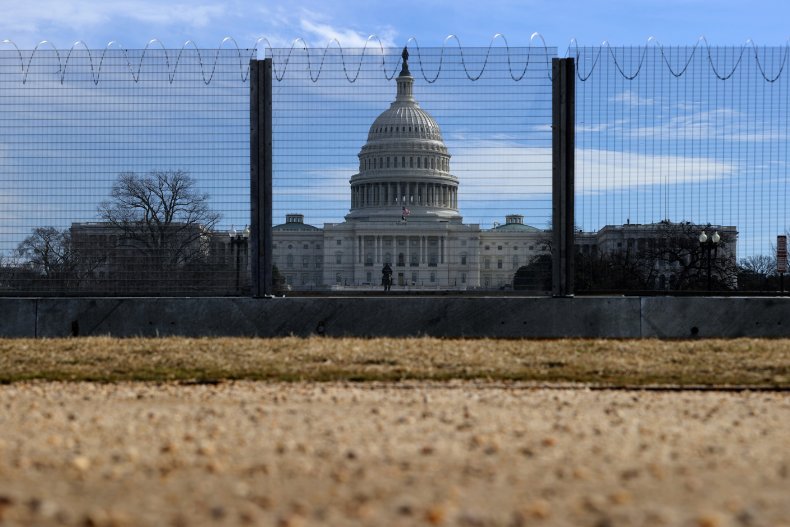Democrats' Revival of Earmarks Makes it Official: The Swamp is Back | Opinion
If there were any doubts that the party that now controls both houses of Congress and the White House is serious about wielding power, nothing could dissipate them more clearly than the news that House Democrats are planning on reviving earmarks.
House Majority Leader Rep. Steny Hoyer (D-MD) and House Appropriations Committee chair Rep. Rosa DeLauro (D-CT) have indicated they will approve "member-directed funding for community projects." Democratic leaders understand that the next two years provide them a finite window of opportunity to advance a liberal agenda. Earmarks can help them not only get their way on a host of controversial issues ranging from immigration to "Green New Deal" spending—but keep their majority in 2022 by giving pandemic-battered voters desperate for financial help a reason to support them in the midterms.
There was a reason Donald Trump said in 2018 he would like to revive the practice of earmarks when Beltway gridlock stymied his agenda. Earmarks will enable endangered House Democrats to bring the bacon home to their districts in ways they've been prohibited from doing for the last decade. More importantly, the practice will give party leaders the ability to whip independent-minded members into line—something that will, no doubt, tempt future Republican leaders to embrace earmarks as well.
Until they were banned by the Republican majority that the anti-big government Tea Party swept into power in 2011, earmarks were a sleazy legislative practice that good government types despised but that politicians loved. The pork-barrel spending they entailed allowed individual members to further their electoral interests, and to trade favors with colleagues. The power to insert into spending bills provisions directing funding to local projects was, as the late Sen. Tom Coburn (R-OK) famously said, "the gateway drug" to corruption and overspending.
The argument for earmarks is that they allow Congress to control spending. As the administrative state has grown over the last century, the ban further strengthened unaccountable federal bureaucrats who can decide how to allocate funds not otherwise directed to specific purposes.
Advocates for earmarks also note that their absence has made it difficult, if not impossible, to pass appropriations bills. Without them, leaders could no longer punish members of their caucuses who refused to fall into line behind compromise measures by denying them earmarks. Buying votes in this manner made the job of herding congressional cats easier and supposedly made the government less dysfunctional.
But these reasons shouldn't confuse anyone as to the real function of earmarks. The corruption that Coburn spoke of wasn't hyperbole.

Though the practice grew more brazen in recent decades, earmarks have always been a standing temptation to wrongdoing. That was obvious as far back as 1939 when the film classic Mr. Smith Goes to Washington told a story about a naive senator who runs afoul of the plans of a corrupt local political machine to profit from federal spending enabled by members of Congress under its control.
It wasn't just in the movies that members of Congress used earmarks to personally benefit themselves, their donors and their cronies. It was commonplace and few of those involved ever faced legal accountability. While scandals like lobbyist Jack Abramoff bribing members of Congress to give his clients earmarks and Rep. Don Young's outrageous $220 million "bridge to nowhere" made headlines, they were actually typical of a fundamentally rotten practice, a form of corruption in and of itself.
Even when personal profit was not involved, earmarks were about buying votes. Members of Congress would show up at local venues bearing enlarged facsimiles of checks from Uncle Sam made out to some institution or group as proof that they were in touch with their voters. But this amounted to Congress giving cash back to taxpayers with an eyedropper that it previously took away from them with wheelbarrows.
Earmarks encouraged the out-of-control spending that has bled the nation dry and made balancing the budget a fantasy.
That Democrats—the party of big government—would be the ones to revive earmarks is understandable. But so long as they were allowed to do so, Republicans were every bit as guilty of using them for the same corrupt purposes.
In theory, most in the GOP want to limit spending. While Minority Leader Kevin McCarthy might dream of being able to use earmarks to police his unruly caucus, he needs to understand that if he betrays the conservative base and goes along with the Democrats, he can kiss his hopes of replacing Nancy Pelosi in the speaker's chair goodbye. Earmarks may provide the Democrats with some short-term gains. But they also prove that Democrats are the true party of the swamp and give the GOP an issue they can use to gain power in 2022.
Jonathan S. Tobin is editor in chief of JNS.org, a senior contributor to The Federalist and a columnist for The New York Post. Follow him on Twitter at: @jonathans_tobin.
The views expressed in this article are the writer's own.


